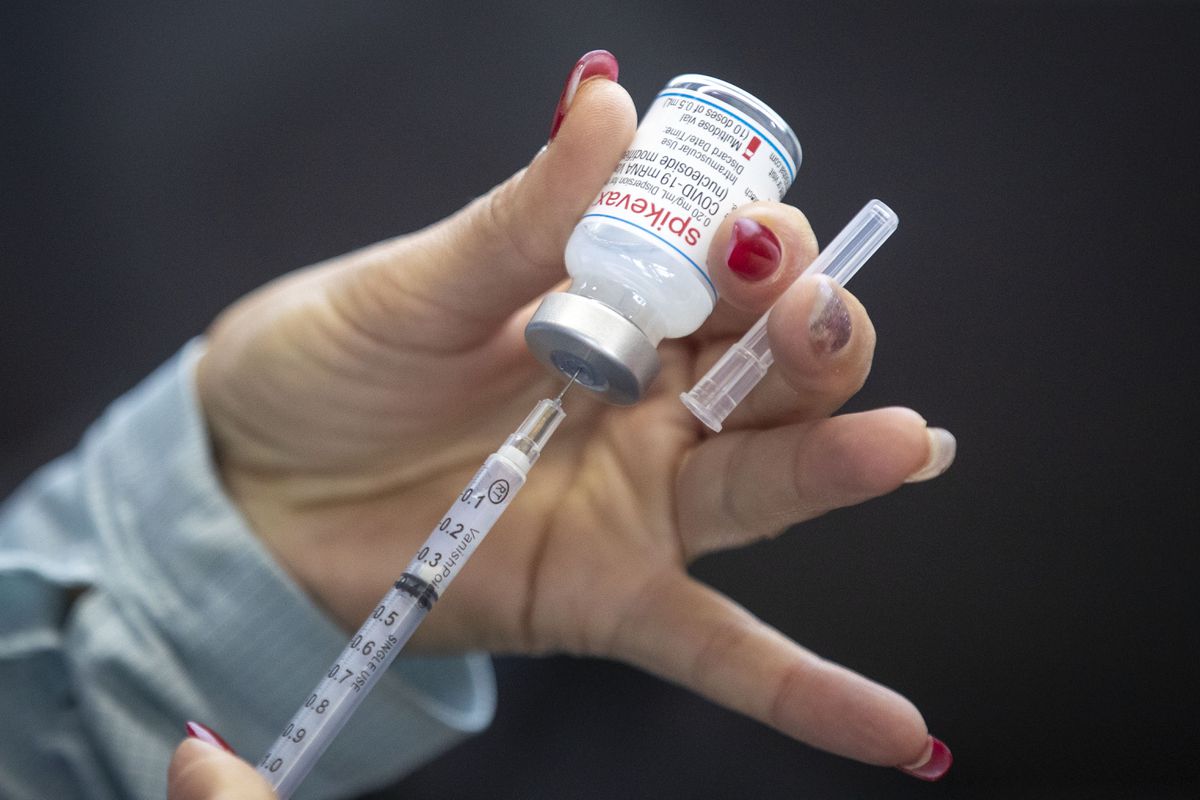Infection
Why do I need another COVID shot this fall?
Question: I read in the news that health officials are urging Canadians to get another COVID vaccine booster this fall. COVID seems to have virtually disappeared. So, why do we need another shot?
Answer: It’s true that COVID-19 infections have gone way down during the summer. They’re at their lowest point in more than a year, based on viral levels in municipal wastewater, and COVID-linked hospitalizations and deaths.
But that doesn’t mean the virus is gone.
As temperatures cool we tend to congregate indoors where it’s easier for respiratory illnesses to spread. What’s more, the protection many people gained from previous inoculations or actual infections may be starting to wane.
“The expectation is that there will be a rise in COVID cases and that will coincide with respiratory virus season in general, with a rise in influenza and RSV cases,” said Fahad Razak, an associate professor of medicine at the University of Toronto.
During the first three years of the pandemic, new and more contagious variants emerged. Waves of COVID swept through communities regardless of the time of year.
The virus may now be evolving into a seasonal pattern similar to influenza in which “transmission tends to decrease in the warmer months and you have an uptick in cases in the cooler months,” said Dr. Razak, who is also an internal medicine physician at Toronto’s St. Michael’s Hospital.
To get an idea of what the next flu season will bring, infectious disease experts have traditionally looked to the southern hemisphere where the seasons are reversed.
“The southern hemisphere serves as a crystal ball to what we can reasonably expect in our future,” said Dawn Bowdish, a professor of medicine and a Canada Research Chair in Aging and Immunity at McMaster University in Hamilton.
And, unfortunately for us, the south has had “a particularly grim flu season and they have also had a lot of COVID,” noted Dr. Bowdish.
It is against this backdrop that the National Advisory Committee on Immunization (NACI) recently recommended a booster shot for those who had their last vaccine, or a known COVID infection, more than six months ago.
Although vaccines have been highly effective in reducing the number of hospital stays and deaths, this tends to wane after about six months, said Dr. Razak.
The previous booster was a bivalent shot that provided protection against the original COVID virus and the highly-contagious Omicron variant.
The World Health Organization recently advised vaccine makers to drop the ancestral strain from their formulations and to switch to a monovalent (single-strain) shot that targets an Omicron descendant lineage called XBB.1 or its close relatives such as XBB.l.5.
Dr. Bowish agrees with the recommendation to stop targeting the original strain because “it’s now extinct.” Essentially, it has been outcompeted and replaced by subsequent variants ranging from Alpha to Omicron.
She added that it makes sense to focus on XBB.1 because it is the dominant form of the virus currently circulating in Canada.
It is also the same sublineage that has been wreaking havoc in the southern hemisphere.
“If we can get a vaccine campaign on the go as early as possible, we should be in a good spot to cope with what could be a pretty bad respiratory-virus season,” said Dr. Bowdish.
Meanwhile, the U.S. Food and Drug Administration has already given the green light for new boosters that target the XBB strain. That means the leading vaccine makers should have updated shots ready for the fall.
However, it remains to be seen whether a majority of Canadians will roll up their sleeves for a jab.
“A lot of people have lost their taste for anything that has to do with COVID – they are done with COVID,” said Angela Rasmussen, a virologist at the University of Saskatchewan.
For the vaccine campaign to succeed, public health officials “will have to make it as easy as possible to get a shot,” said Dr. Rasmussen. “For example, they could allow people to receive their booster at the same time as their seasonal flu vaccine.”
And, in fact, that proposal is included in NACI’s latest advisory. But it will be up to each of the provincial and territorial governments to implement the recommendations as they see fit.
In the end, Dr. Rasmussen believes that a booster shot may be more palatable to the public than other virus-containment measures, like masking. “If you really want to put COVID behind you,” she says, “get a vaccine that will protect you and your community. Then you will have a lot less to worry about.”
Paul Taylor is a former Patient Navigation Adviser at Sunnybrook Health Sciences Centre and former health editor of The Globe and Mail.

